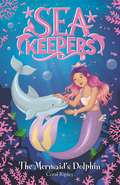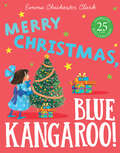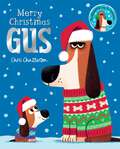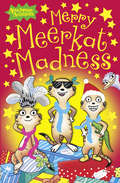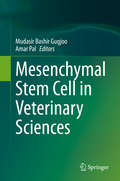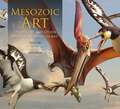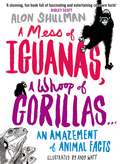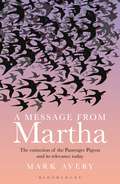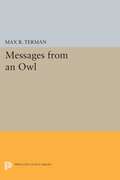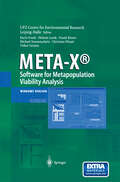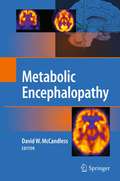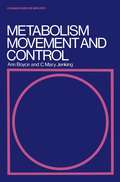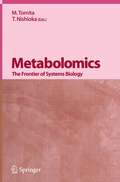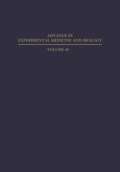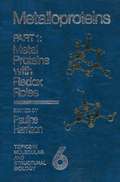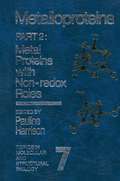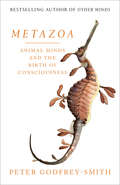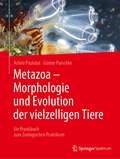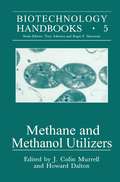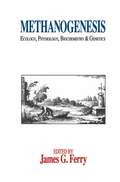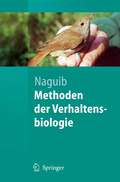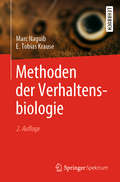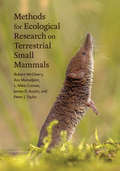- Table View
- List View
The Mermaid's Dolphin: Book 1 (Sea Keepers #1)
by Coral RipleyDive into a dolphin adventure! The first book in a magical new mermaid series about saving our seas.When Emily, Grace and Layla rescue a dolphin from a fishing net, they get swept away on a magical mermaid adventure! The girls are chosen to become Sea Keepers - guardians of the underwater world. The oceans desperately need their help, and not just because of pollution. . . An evil mermaid named Effluvia has stirred up a storm of rubbish - and the Sea Keepers must stop her! Can they find a magic pearl and save a beautiful cove for the creatures who live there?
Merry Christmas, Bing! (Bing)
by HarperCollinsChildren’sBooksA gorgeous new festive Bing picture book that shows children the importance of patience, resilience and imagination.
Merry Christmas, Blue Kangaroo! (Blue Kangaroo)
by Emma Chichester ClarkLily and Blue Kangaroo – a friendship forever! A heart warming festive story featuring Lily and her much-loved toy, Blue Kangaroo, from award-winning, renowned illustrator, Emma Chichester Clark. This is a read-along edition with audio synced to the text, performed by Emilia Fox.
Merry Christmas, Gus
by Chris ChattertonA hilarious Christmas picture book, starring the wonderfully grumpy Gus!Gus the dog doesn't like Christmas. He doesn't like carols, or cake, or Christmas jumpers. And he certainly doesn't like mistletoe. To Gus, a tree is only good for one thing, and it's not for hanging baubles on. But can everyone's favourite grump learn to love the season of goodwill?Brilliantly funny, Merry Christmas, Gus will appeal to everyone who loves Christmas . . . and to all those Scrooges who don't!From Chris Chatterton, the artist behind the bestselling Ten Minutes to Bed series.
Merry Meerkat Madness (Awesome Animals)
by Ian WhybrowThe fourth meerkat story in the hilarious Awesome Animals series – awesome adventures with the wildest wildlife. Told in Ian Whybrow’s unique style this hilarious Christmas adventure is a must-have for little meerkat fans.
Mesenchymal Stem Cell in Veterinary Sciences
by Mudasir Bashir Gugjoo Amar PalThis book focuses on mesenchymal stem cells (MSCs) of animal origin, including their isolation, characterization, and clinical applications. After briefly discussing the historical development of the field of stem cell research, it describes the basic properties and nature of stem cells particularly in relation to MSCs. In turn, it reviews materials and methods used to isolate MSCs from various sources, culture expansion, characterization and long-term storage. It also explores the therapeutic efficacy, immunomodulation and anti-inflammatory, and differentiation properties of MSCs. Importantly, the book discusses the applications of genetic engineering to enhance the efficacy and potential of MSCs in regenerative medicine. The book largely addresses the potential applications of mesenchymal stem cells in therapies for important species of domesticated animals including sheep, goats, cattle, buffalo, cats, dogs and horses. Finally, the book presents an abridgement of challenges and future prospects of stem cell research and application in medicine, in general and veterinary sciences, in particular.
Mesozoic Art: Dinosaurs and Other Ancient Animals in Art
by Steve White Darren NaishShowcases the work of twenty leading paleoartists who expertly bring these extinct animals to life in exquisite detail.Dinosaurs are endlessly fascinating to people of every age, from the youngest child who enjoys learning the tongue-twisting names to adults who grew up with Jurassic Park and Walking with Dinosaurs. As our knowledge of the prehistoric world continues to evolve and grow, so has the discipline of bringing these ancient worlds to life artistically. Paleoart puts flesh on the bones of long-extinct organisms, and illustrates the world they lived in. Mesozoic Art presents twenty of the best artists working in this field, representing a broad spectrum of disciplines, from traditional painting to cutting-edge digital technology. Some provide the artwork for new scientific papers that demand high-end paleoart as part of their presentation to the world at large; they also work for the likes of National Geographic and provide art to museums around the world to illustrate their displays. Other artists are the new rising stars of paleoart in an ever-growing, ever-diversifying field. Arranged by portfolio, this book brings this dramatic art to a wide, contemporary audience. The art is accompanied by text on the animals and their lives, written by palaeontologist Darren Naish. Paleoart is dynamic, fluid and colourful, as were the beasts it portrays, which are displayed in this magnificent book.
A Mess of Iguanas, A Whoop of Gorillas ...: An Amazement of Animal Facts
by Alon ShulmanThere are many wonderful creatures on earth - and even more incredible ways to describe them.With more collective nouns for animal groups than anyone else in the world, from a Business of Ferrets to a Wobble of Ostriches (not forgetting, of course, an Implausibility of Gnus) Alon Shulman's A Mess of Iguanas, A Whoop of Gorillas will tell you what to call a group of zebras, chickens, parrots, spiders, tigers or penguins the next time you encounter one - and will even let you know the difference between a school and a shoal of fish. Not to mention why groups of swans are known as a lamentation, a bank and a wedge.It will also tell you the most outlandish, strange yet completely accurate animal facts you can imagine. For example, did you know that polar bears are invisible to infra-red because they have transparent fur? Or that hippopotamus can't swim? Or that ostriches do not bury their heads in the sand?Filled with everything you could ever want to know about the creatures that inhabit our world, this brilliant compendium of animal curiosities is perfect for pub quizzers, language buffs, wannabe know-it-alls and any readers aged, well ... 8 to 80.
A Message from Martha: The Extinction Of The Passenger Pigeon And Its Relevance Today (Bloomsbury Nature Writing Ser.)
by Mark AverySeptember 1st, 2014 marked the centenary of one of the best-documented extinctions in history – the demise of the Passenger Pigeon. From being the commonest bird on the planet 50 years earlier, the species became extinct on that fateful day, with the death in Cincinnati Zoo of Martha – the last of her kind. This book tells the tale of the Passenger Pigeon, and of Martha, and of author Mark Avery's journey in search of them. It looks at how the species was a cornerstone of the now much-diminished ecology of the eastern United States, and how the species went from a population that numbered in the billions to nil in a terrifyingly brief period of time. It also explores the largely untold story of the ecological annihilation of this part of America in the latter half of the 19th century, a time that saw an unprecedented loss of natural beauty and richness as forests were felled and the prairies were ploughed, with wildlife slaughtered more or less indiscriminately. Despite the underlying theme of loss, this book is more than another depressing tale of human greed and ecological stupidity. It contains an underlying message – that we need to re-forge our relationship with the natural world on which we depend, and plan a more sustainable future. Otherwise more species will go the way of the Passenger Pigeon. We should listen to the message from Martha.
Messages from an Owl
by Max R. TermanWhen zoologist Max Terman came to the rescue of a great horned owlet in a Kansas town park, he embarked on an adventure that would test his scientific ingenuity and lead to unprecedented observations of an owl's hidden life in the wild. In Messages from an Owl, Terman not only relates his experiences nursing the starving owlet, "Stripey," back to health and teaching it survival skills in his barn, but also describes the anxiety and elation of letting a companion loose into an uncertain world. Once Terman felt that Stripey knew how to dive after prey, he set the owl free. At this point his story could have ended, with no clue as to what the young bird's fate would be--had it not been for Terman's experimentation with radio tags. By strapping the tags to Stripey, he actually managed to follow the owl into the wild and observe for himself the behavior of a hand-reared individual reunited with its natural environment.Through this unique use of telemetry, Terman tracked Stripey for over six years after the bird left the scientist's barn and took up residence in the surrounding countryside on the Kansas prairie. The radio beacon provided Terman with information on the owl's regular patterns of playing, hunting, exploring, and protecting. It enabled him to witness the moments when Stripey was bantered and mobbed by crows, when other owls launched fierce attacks, and when a prospective mate caught Stripey's eye. On occasional returns to the barn, the owl would follow Terman around as he performed chores, usually waiting for a handout.Until now, scientists have generally believed that an owl nurtured by humans becomes ill-adapted for meeting the challenges of life in the wild. Terman's research proves otherwise. Stripey surpassed all expectations by becoming a totally independent wild creature. With Terman, however, Stripey remained tame, allowing the author to explore something one rarely sees in owls: a warm interest in humanity. Terman engagingly re-creates this dimension of Stripey as he describes with humor and compassion the daily challenges of probing the life of a "phantom winged tiger."Originally published in 1996.The Princeton Legacy Library uses the latest print-on-demand technology to again make available previously out-of-print books from the distinguished backlist of Princeton University Press. These editions preserve the original texts of these important books while presenting them in durable paperback and hardcover editions. The goal of the Princeton Legacy Library is to vastly increase access to the rich scholarly heritage found in the thousands of books published by Princeton University Press since its founding in 1905.
META-X®-Software for Metapopulation Viability Analysis
by Karin Frank Helmut Lorek Frank Köster Michael Sonnenschein Christian Wissel Volker GrimmMeta-X is a user-friendly computer program that allows students, teachers, and researchers to perform a metapopulation viability analysis i.e. to assess the extinction risk of (meta)populations on discrete, partially isolated patches of habitat, in a comfortable way. The CD comes with an extensive handbook which explains the basic concept of the program and takes you on a guided tour through a model experiment. It further provides the necessary scientific background on both metapopulation dynamics and population viability analysis. A special feature of Meta-X is that it supports comparative analyses of alternative scenarios. This predestines Meta-X to serve as an aid for decision making in conservation management and landscape planning. Furthermore, handbook and software together provide an invaluable help in research and teaching.
Metabolic Encephalopathy
by David W. McCandlessMetabolic Encephalopathy is meant to combine and correlate animal and human studies. It is hoped that increased awareness of the importance of early diagnosis and treatment of these disorders may result in a lowering of the incidence of structural changes and morbidity. These disorders hold a special fascination for both basic scientists and clinical investigators because they are accessible, treatable and there exists good animal models for study. Therefore, this book will pull together basic and clinical neuroscience issue in the treatment of specific metabolic encephalopathies.
Metabolomics: The Frontier of Systems Biology
by M. Tomita T. NishiokaMetabolism is the sum of the chemical reactions in cells that produce life-sustaining chemical energy and metabolites. In the post-genome era, metabolism has taken on new significance for biological scientists: metabolites are the chemical basis of phenotypes that are final expressions of genomic information. This book covers research on metabolomics, ranging from the development of specialized chemical analytical techniques to the construction of databases and methods for metabolic simulation. The authors have been directly involved in the development of all the subject areas, including capillary electrophoresis, liquid chromatography, mass spectrometry, metabolic databases, and metabolic simulation. Breakthrough achievements and the future of metabolome studies are described, making this book a valuable source for researchers in metabolomics in diverse fields, such as plant, animal, cellular, microbial, pharmaceutical, medical, and genetic sciences.
Metal Ions in Biological Systems: Studies of Some Biomedical and Environmental Problems (Advances in Experimental Medicine and Biology #40)
by Sanat DharThe articles published in this volume are based on the papers del ivered at a conference on the Role of Metal Ions in Biological Systems held November 20 and 21, 1972, at Argonne National Laboratory. The purpose of the conference was to present to an interdiscipl inary audience of physical scientists some recent developments illustrating the chemical and environ mental participation of the heavy metal ions in the biological system. The invited speakers at the conference are special ists in the fields they describe, and the articles presented here are at a level of interest to readers with backgrounds in physical sciences who are not necessari Iy doing research in the areas described. The articles are referenced through 1972, and in some cases early 1973, and thus should also be of value to research workers. It is hoped that the book wi II be of particular interest to chemists, biologists, workers in the fields of en vironmental science and publ ic health, as wei I as graduate and senior undergraduate students in these discipl ines. The conference was sponsored by the Central States Universities, Inc. , a consortium of sixteen midwestern univer sities, the Center for Educational Affairs, Argonne National Laboratory, and the United States Atomic Energy Commission. It is my pleasure to thank the members of the conference committee for their ideas and active help in organizing the conference.
Metalloproteins: Part 1: Metal Proteins with Redox Roles (Topics in Molecular and Structural Biology)
by P.M. HarrisonMetalloproteins: Metal Proteins with Non-Redox Roles (Topics in Molecular and Structural Biology)
by P.M. HarrisonMetazoa: Animal Minds And The Birth Of Consciousness
by Peter Godfrey-SmithThe scuba-diving philosopher and bestselling author of Other Minds explores the origins of animal consciousness.
Metazoa - Morphologie und Evolution der vielzelligen Tiere: Ein Praxisbuch zum Zoologischen Praktikum
by Achim Paululat Günter PurschkeDie vielzelligen Tiere - Metazoa - haben im Laufe der Evolution alle erdenklichen Lebensräume, die unsere Erde bietet, erfolgreich besiedelt. Ihre Körper vollbringen dabei Höchstleistungen, um unter oft widrigen Bedingungen zu überleben, zu wachsen und zur Reproduktion zu kommen. Stetig Nachkommen zeugen, Gene weitergeben und durch Mutationen Anpassungen an sich ändernde und neue Lebensräume erreichen, ist das Erfolgsgeheimnis der Evolution. Aber wie ist der Körper eines Tieres aufgebaut, um solche Leistungen zu erbringen? Welche Organe besitzen Tiere, wie nehmen sie ihre Umwelt wahr, und in welchem evolutionären Zusammenhang stehen die auf den ersten Blick so unterschiedlichen Organismen? Dies sind nur einige exemplarisch ausgewählte Fragen, die sich jede Biologiestudentin und jeder Biologiestudent am Anfang des Studiums stellt. Dieses Buch stellt die wichtigsten Baupläne ausgewählter Tiere vor und ist als modernes Praxisbuch konzipiert. Es soll allen Studierenden, die im Rahmen Ihrer zoologischen Ausbildung in experimentellen Übungen Tiere präparieren, helfen, die grundlegenden Körperformen und -strukturen, die in den jeweiligen Tiergruppen auftreten, zu erkennen und zu verstehen. Was sind die wichtigsten Merkmale, die Nematoden, Anneliden, Insekten usw. auszeichnet und jeweils zum evolutiven Erfolg dieser Tiergruppen beigetragen haben? Wo gibt es Gemeinsamkeiten und wo Unterschiede? Wie viele unterschiedliche Lösungen hat die Evolution für ein bestimmtes biologisches Problem gefunden? Die Vermittlung der Morphologie und Anatomie der Tiere, ihrer so genannten Grundbaupläne und der evolutiven Zusammenhänge ist das Ziel des vorliegenden Werkes. Dafür setzen die Autoren konsequent auf fokussierte kompakte Texte und Fotografien, die nicht nur die wichtigsten äußeren Merkmale der Tiere zeigen, sondern auch die Präparation Schritt für Schritt nachvollziehbar machen. Die Autoren wünschen sich, dass alle Biologiestudentinnen und -studenten mit Hilfe dieses neuen Buches erfolgreich ihr Zoologisches Praktikum bestehen werden, und neue Einblicke in die Morphologie und Evolution der Tiere gewinnen.
Methane and Methanol Utilizers (Biotechnology Handbooks #5)
by J. Colin Murrell Howard DaltonMethane and its oxidation product, methanol, have occupied an important position in the chemical industry for many years: the former as a feedstock, the latter as a primary chemical from which many products are produced. More recently, the role played by methane as a potent "greenhouse" gas has aroused considerable attention from environmentalists and clima tologists alike. This role for C compounds has, of course, been quite 1 incidental to the myriad of microorganisms on this planet that have adapted their life-styles to take advantage of these readily available am bient sources. Methane, a renewable energy source that will always be with us, is actually a difficult molecule to activate; so any microorganism that can effect this may point the way to catalytic chemists looking for con trollable methane oxidation. Methanol, formed as a breakdown product of plant material, is also ubiquitous and has also encouraged the growth of prokaryotes and eukaryotes alike. In an attempt to give a balanced view of how microorganisms have been able to exploit these simple carbon sources, we have asked a number ofleading scientists (modesty forbids our own inclusion here) to contribute chapters on their specialist areas of the subject.
Methanogenesis: Ecology, Physiology, Biochemistry & Genetics (Chapman & Hall Microbiology Series)
by James G. FerrySince the general recognition of the Archaebacteria, research into the evolution, metabolism, molecular biology and ecological roles of these fastidious anaerobes has proceeded at an ever-increasing pace. All possess a very novel biochemistry and many exploit unique ecological niches. Methanogens, which convert one-and-two carbon compounds into the important atmospheric gas methane, are the largest group among the Archaebacteria. Of all microbial groups, methanogens provide perhaps the best opportunity to study evolution because of their phyologenetic diversity and unique biochemistry. Today, the analysis of methanogens is at a threshold. Molecular-biological studies of these microorganisms are revealing more and more processes unique to this group, and in turn, studies of methanogens are providing new perspectives to the broader fields of biochemistry and molecular biology. This volume is the first book to be published on methanogenesis, and it will provide the reader with a comprehensive view of the field and point to future trends.
Methoden der Verhaltensbiologie (Springer-Lehrbuch)
by Marc NaguibMarc Naguib erklärt die grundlegenden Methoden der qualitativen und quantitativen Erfassung von Verhalten. Dabei werden deskriptive und experimentelle Ansätze von Versuchsplänen berücksichtigt. Anhand von Beispielen aus der aktuellen Forschung wird die Breite der modernen verhaltensbiologischen Forschung anschaulich dargestellt.
Methoden der Verhaltensbiologie (Springer-lehrbuch Ser.)
by Marc Naguib E. Tobias KrauseMarc Naguib erklärt die grundlegenden Methoden der qualitativen und quantitativen Erfassung von Verhalten. Dabei werden deskriptive und experimentelle Ansätze von Versuchsplänen berücksichtigt. Anhand von Beispielen aus der aktuellen Forschung wird die Breite der modernen verhaltensbiologischen Forschung anschaulich dargestellt.
Methods for Ecological Research on Terrestrial Small Mammals
by Robert McCleery Ara Monadjem L. Mike Conner James D. Austin Peter J. TaylorAll the information researchers, students, and practitioners need to conducted innovative, state-of-the-art research on small mammals.Rodents and insectivores constitute the vast majority of mammals on our planet, yet we often overlook the importance of this group. As seed dispersers, prey species, and disease regulators, these animals are critical to the functioning of our ecological systems. While considerable material exists that describes these species, there has been no dedicated guide explaining how to effectively research them—until now. Methods for Ecological Research on Terrestrial Small Mammals is a one-stop resource compiling all the information readers need to conduct state-of-the-art research on small terrestrial mammals across the globe. The authors cover the full spectrum of issues, from capture, handling, identification, reproduction, demography, and taxonomy to behavior, diet, evolution, diseases, movements, morphometrics, and more. They also:• highlight the latest techniques while carefully explaining the tried-and-tested methods needed to conduct rigorous scientific inquiries; • provide step-by-step examples and case studies, demonstrating how the methods discussed can be used in actual research projects; • compare and contrast methodologies, analytical techniques, and software packages, helping researchers determine which pathways and tools will yield the best results for their studies. A comprehensive and invaluable resource, Methods for Ecological Research on Terrestrial Small Mammals is a must-have for any ecologist working on small mammals.
Methods for Ecological Research on Terrestrial Small Mammals
by Robert McCleery Ara Monadjem L. Mike Conner James D. Austin Peter J. TaylorAll the information researchers, students, and practitioners need to conducted innovative, state-of-the-art research on small mammals.Rodents and insectivores constitute the vast majority of mammals on our planet, yet we often overlook the importance of this group. As seed dispersers, prey species, and disease regulators, these animals are critical to the functioning of our ecological systems. While considerable material exists that describes these species, there has been no dedicated guide explaining how to effectively research them—until now. Methods for Ecological Research on Terrestrial Small Mammals is a one-stop resource compiling all the information readers need to conduct state-of-the-art research on small terrestrial mammals across the globe. The authors cover the full spectrum of issues, from capture, handling, identification, reproduction, demography, and taxonomy to behavior, diet, evolution, diseases, movements, morphometrics, and more. They also:• highlight the latest techniques while carefully explaining the tried-and-tested methods needed to conduct rigorous scientific inquiries; • provide step-by-step examples and case studies, demonstrating how the methods discussed can be used in actual research projects; • compare and contrast methodologies, analytical techniques, and software packages, helping researchers determine which pathways and tools will yield the best results for their studies. A comprehensive and invaluable resource, Methods for Ecological Research on Terrestrial Small Mammals is a must-have for any ecologist working on small mammals.
